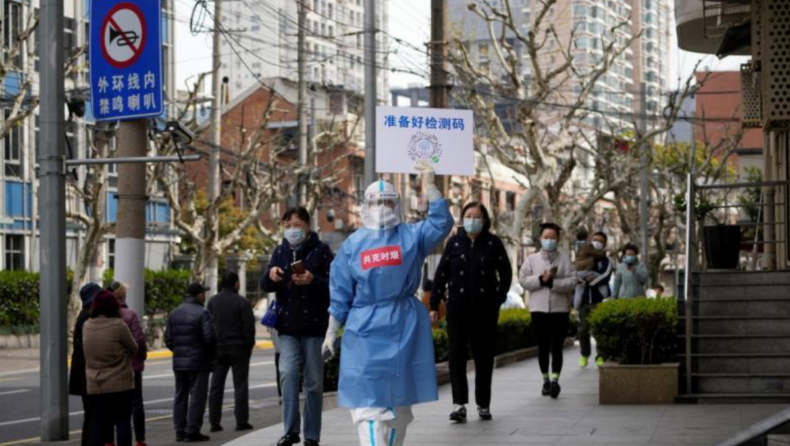After the country’s first coronavirus deaths in six months, Beijing says it is facing its most severe Covid test yet, and cases continue to rise.

Since the outbreak began in China, there has been a record increase in corona cases. On Wednesday, China reported 31,454 new cases, 27,517 of which had no symptoms.
Since Saturday, three people have died in the Chinese capital, bringing the country’s official death toll to 5,229. The latest fatalities have put parts of the city, which is home to more than 21 million people, back on lockdown.
The deaths occur in the midst of rare protests against China’s zero-Covid policy. While China claims that its strict zero-Covid policy has resulted in far fewer coronavirus deaths than the rest of the world, the true figure is thought to be far higher, there have been numerous reports of seriously ill people being delayed emergency treatment in locked-down areas or quarantine facilities.
And Chinese bureaucrats have certainly come up with novel ways to describe lockdowns. The measures had become so divisive and feared that confusing official jargon was one way to make them more acceptable. As a result, they used terms like “stasis management,” “at-home stillness,” or, to be more specific, “stillness throughout the entire region” or “stop all unnecessary movement.”
“Covid is political in China,” says William Hurst, a Cambridge University professor of Chinese development.

The once-every-five-years party congress has extra significance this year because, if all goes as planned, Mr Xi will become the first leader since Mao Zedong to serve as party boss for the third time. Nothing can ruin a party like a Covid outbreak, especially since Mr Xi and his bureaucrats insist “dynamic zero” is a success that is saving lives. According to public health experts, if zero-Covid was truly about saving lives, Beijing would have implemented a more aggressive vaccine policy in line with other countries.
However, despite evidence that its homemade vaccines are ineffective, China has refused to import vaccines. And the virus has killed unvaccinated elderly people, whom Beijing claims it is attempting to protect with zero-Covid. For several nights, labourers fought with white-clad Covid prevention enforcement officials, and then overnight on Monday, the rage erupted into a mass act of defiance on the streets of Guangzhou.
Unsubstantiated rumours have once again played a role. According to reports, testing companies are faking PCR results in order to artificially increase the number of infections in order to make more money. The coronavirus rumour mill is also gaining traction in the country’s north.
Because Covid amelioration continues to dominate life here, even minor changes in how it is administered can cause consternation and panic. A series of changes announced last week that softened the rules were interpreted as a sign that more easing was possible in the future.
Even if the government is thinking about it, it may not be soon enough. Fear, panic, and ignorance drove the mass breakout at the world’s largest Apple computer assembly line.

Foxconn, the company that operates this massive factory, must bear some of the blame, but the real culprit is this country’s rigid, zero-Covid approach. It is true that this strategy has kept the country’s hospitals from becoming overcrowded, and it is also true that Covid has resulted in tragic deaths.
Read More: Foxconn closed iPhone Factory in china over COVID restrictions
However, it is also true that catching the virus means nothing more than a few days sick at home for the vast majority of infected people who have been vaccinated.
Many Chinese people are completely unaware of this last point. If Foxconn does not properly manage this crisis, it will have an immediate impact on global supply chains for Apple and other products. However, in the long run, this reveals a much larger problem for China.
The government’s control system for Covid is incapable of functioning without causing significant disruption, not only to people’s lives but potentially to key economic sectors.













